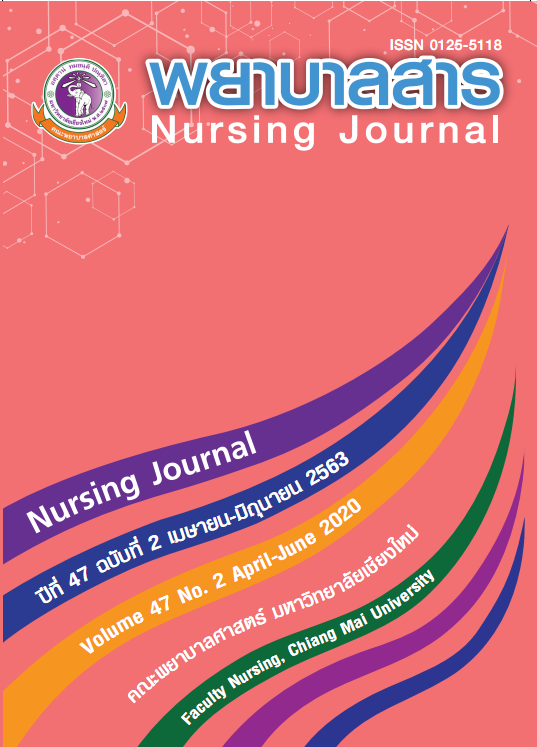Applying Lean Thinking to Improve Discharge Process for Sick Newborn Babies, Pediatric Ward 3, Buddhachinaraj Phitsanulok Hospital
Keywords:
: Applying Lean Thinking, Discharge Process, Sick Newborn BabiesAbstract
Improving the service process by using Lean thinking of Womack and Jones (2003) can provide efficient and fast service to consumers. The purpose of this independent study was to improve the discharge process for sick newborn babies in Pediatric Ward 3, Buddhachinaraj Phitsanulok Hospital, by using Lean Thinking. The sample of this study included 20 personnel and discharge activities of the sick newborn baby from July to October 2017. The research instruments included: 1) a table for describing the activities of the discharge process, 2) a form for value analysis of discharge activity, 3) a record form for time spent on discharge activity 4) the focus group interview guidelines regarding problems and recommendations. These research instruments were validated by three experts. The inter-rater reliability of two observers for time recording was 1.0. The data was analyzed using descriptive statistics.
The results revealed that:
- The patient discharge process for sick newborn babies improvement applying Lean thinking in Pediatric Ward 3 consisted of 5 major activities and 15 minor activities which is reduced from the original 23 minor activities for the process before improvement.
- The standard time of the improved patient discharge process for sick newborn babies applying Lean thinking in Pediatric Ward 3 was 43.47 minutes which is reduced from the original standard time of 135.02 minutes for the process before improvement.
- The problems of applying Lean Thinking to improve discharge process for sick newborn babies in Pediatric Ward 3 include: 1) the different perceptions and understandings of Lean Thinking among personnel 2) the computer was old and the software program was not stable 3) some of the step of the Lean process were difficult to do when the workload was high. The recommendations included the continuous development of a plan to educate personnel about Lean Thinking, notifying the administrator about the computer and software program problems, and assigning the staff to match the workload.
The results of this study revealed that the improvement of the discharge process for sick newborn babies by applying Lean thinking can reduce the activities and time spent on the process. Therefore, administrators can use the results of the study as a guideline to improve the other service process in the organization.
References
Barnes, R. M. (1958). Motion and Time Study (4th ed.). New York: John Wiley & Sons.
Hobson, K. (2007). Lean management systems: A case study in reducing waiting lists. Ultrasound, 15(1), 31-34.
Jirapaet, K. (2008). Principles of basic newborn care. Bangkok: The War Veterans Organization of Thailand Print. (In Thai)
Joosten, T., Bongers, I., & Janssen, R. (2009). Application of lean thinking to health care: issues And observations. International Journal for Quality Health Care, 21 (5), 341-347.
Maloney, C. G., Wolfe, D., Geteland, P. H., Hales, J. W., & Nkoy, F. L. (2007). A Tool for Improving Patient Discharge Process and Hospital Comunication Practices: the Patient Tracker. AMIA Sumposium Proceeding, 493-497. (In Thai)
Pediatric Ward 3, Buddhachinaraj Phitsanulok Hospital. (2015). Report of Key Performance Indicator Pediatric Ward 3, 2015. Phitsanulok: Pediatrics Working Group Buddhachinaraj Phitsanulok. (In Thai)
Pediatric Ward 3 Buddhachinaraj Phitsanulok Hospital. (2016). Report of Key Performance Indicator Pediatric Ward 3, 2016. Phitsanulok: Pediatrics Working Group Buddhachinaraj Phitsanulok. (In Thai)
Rijiravanich, V. (2010). Work Study and Office of Academic Resources (7th Ed.). Bangkok: Chulalongkorn University Press. (In Thai)
Senadisai, S. , & Arpanantikul, M. (2009). Nursing practice Manual Guides. Bangkok: Judtong print. (In Thai)
Srisawat, S. (2012). Development of a model for newborn discharge management in obstetricunit, Maharaj Nakorn Chiang Mai hospital (Independent Study, Chiangmai University). (In Thai)
Supachutikul, A. (2009). Lean and seamless healthcare: The Health care Accreditation Institute(Public Organization). Nonthaburi: Publishing D-One Book Company Co., Ltd. (In Thai)
Taleghani, M. (2010). Success and Failure Issues to Lead Lean Manufacturing Implementation.World Academy of Science, Engineering and Technology, 615-618.
Thampanichawat, W. (2010). Nursing of high-risk newborn babies. Bangkok: Textbook Project,Faculty of Nursing, Mahidol University. (In Thai)
Norkaew, W. (2010). Development of model for patient discharge management in privat e ward 2, Maharaj Nakorn Chiang Mai hospital (Independent Study, Chiangmai University). (In Thai)
Wolf, L. (2008). Discharge process improvement: A case study by Barnes-Jewish Hospital of St.Louis. Retrieved from https://silo.tips/download/discharge-process-improvement-a-case-study-by-barnes-jewish-hospital-of-st-louis
Womack, J. P., & Jones, D. T. (2003). Lean Thinking: Banish Waste and Create Wealth in Your Corporation. New York: Simon & Schuster Press.
Worley, J. M., & Doolen, T. L. (2006). The role of communication and management support in a lean manufacturing implementation. Management Decision, 44 (2), 228-245.
Yang, P., & Yu, Y. (2010). The Barriers to SMEs’ Implementation of Lean Production andCountermeasures Based on SMEs in Wenzhou. International Journal of Innovation, Management and Technology, 1 (2), 220-225.
Downloads
Published
How to Cite
Issue
Section
License
บทความที่ได้รับการตีพิมพ์เป็นลิขสิทธิ์ของวารสารพยาบาลสาร
ข้อความที่ปรากฏในบทความแต่ละเรื่องในวารสารวิชาการเล่มนี้เป็นความคิดเห็นส่วนตัวของผู้เขียนแต่ละท่านไม่เกี่ยวข้องกับมหาวิทยาลัยเชียงใหม่ และคณาจารย์ท่านอื่นๆในมหาวิทยาลัยฯ แต่อย่างใด ความรับผิดชอบองค์ประกอบทั้งหมดของบทความแต่ละเรื่องเป็นของผู้เขียนแต่ละท่าน หากมีความผิดพลาดใด ๆ ผู้เขียนแต่ละท่านจะรับผิดชอบบทความของตนเองแต่ผู้เดียว






